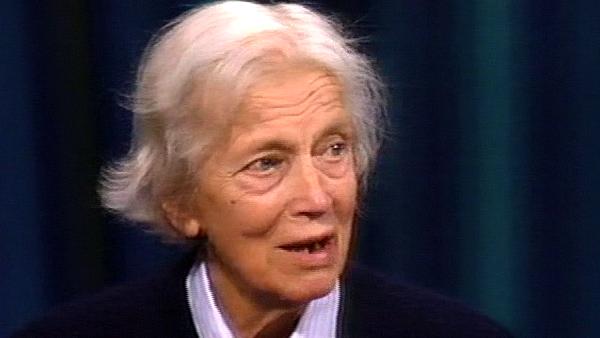NEXT STORY

Crystallising penicillin
RELATED STORIES

NEXT STORY

Crystallising penicillin
RELATED STORIES



|
Views | Duration | |
|---|---|---|---|
| 21. Working on cholesterol | 133 | 04:41 | |
| 22. Determining the chemical structure of penicillin | 160 | 06:39 | |
| 23. Work on penicillin | 101 | 03:34 | |
| 24. Crystallising penicillin | 85 | 04:25 | |
| 25. Photographing potassium, rubidium and sodium salts | 56 | 04:26 | |
| 26. Mapping the molecular structure of penicillin | 101 | 06:38 | |
| 27. Correlating the work on penicillin | 59 | 02:18 | |
| 28. Computing solutions for the structure of penicillin | 73 | 04:29 | |
| 29. My molecular model of penicillin | 94 | 03:27 | |
| 30. Visiting America | 109 | 02:12 |


I started working in, with the, with Ernst and Norman Heatley, and Edward Abraham and the rest of them as soon as they began.
[Q] Right.
Of course, they were at that time only working on trying to degrade the molecule and get bits out of it that they could think how they should be put together in, sort of, the usual chemists' way, and we were just helping them find what these bits were by just making cell dimension measurements and... and density measurements and finally, essentially, the molecular weights. And the important point was reached somewhere, I think, in '43, about, where we knew, essentially, what both halves of the molecule were - the penicillamine half with the amino acid, penicillamine, and the sulphur atom then attached, and the... making the thiazolidine ring system, and then the other half, which, effectively, was aldehyde. But they're drawn out there, two halves of them, if you wanted, you know. And, once you had these two halves of the molecule, you just could make up chemical structures for the whole of penicillin.
[Q] And this is on page 310?
And the two most obvious ones in my memory is that they were drawn out in our lab the same day, but I don't know who of the chemists regards themselves as most important for each, though I know that Robinson had the idea of the thiazolidine oxazolone, and once he got this idea, he never could think of the other idea, which was the beta-lactam idea. The beta-lactam was, in fact, drawn up by one of them. My memory was that it was probably Wilson Baker, but Edward Abraham's memory is that it was himself. And we just kept them both in mind, and the group here at Imperial College and around Heilbron drew up more complicated ones, which were called a trisactic one, and... and there was another, similar one because of the particular derivatives that had been obtained, it had three rings in them to begin with.
British pioneer of X-ray crystallography, Dorothy Hodgkin (1910-1994), is best known for her ground-breaking discovery of the structures of penicillin, insulin and vitamin B12. At age 18, she started studying chemistry at Somerville College, Oxford, then one of the University of Oxford colleges for women only. She also studied at the University of Cambridge under John Desmond Bernal, where she became aware of the potential of X-ray crystallography to determine the structure of proteins. Together with Sydney Brenner, Jack Dunitz, Leslie Orgel, and Beryl Oughton, she was one of the first people in April 1953 to see the model of the structure of DNA, constructed by Francis Crick and James Watson. She was awarded the 1964 Nobel Prize in Chemistry and is also known for her peace work with organisations such as Science for Peace and the Medical Aid Committee for Vietnam. All recorded material copyright of The Biochemical Society.
Title: Work on penicillin
Listeners: Guy Dodson
Guy Dodson studied chemistry and physical science at the University of New Zealand, followed by a PhD on the crystallographic study of an alkaloid. In 1961, he came to Oxford to work on the crystal structure of insulin. In the mid 1970s Guy and his wife moved to York University to establish a laboratory. In addition to insulin studies the laboratory has investigated many complex molecules of medical significance, including haemoglobin, myoglobin, HIV related proteins, proteases and proteins involved in managing nucleic acids in cells. In 1993, he went to the NIMR in London to establish a crystallographic group in an environment that spanned molecular, physiological and disease-related disciplines. Here his research began on some cell signalling proteins. His interests on medically relevant proteins included prions, malarial and TB proteins, and some clinically relevant thrombin inhibitors. Guy Dodson retired in 2004 but is still finding much to do in York and the NIMR.
Tags: penicillin, molecular weight, penicillamine, thiazolidine, beta lactam, aldehyde
Duration: 3 minutes, 34 seconds
Date story recorded: 1990
Date story went live: 02 June 2008